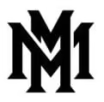Ultimate Shoulder Muscle Guide: Build Bigger Front, Side, and Rear Delts
The deltoids, or shoulder muscles, are critical to building a balanced and aesthetic physique. They play a central role in upper body strength and mobility, as well as in maintaining shoulder stability during pressing and pulling movements. For bodybuilders, well-developed delts create the broad, powerful look that accentuates the upper body, making the waist appear smaller.
What Are The Deltoids?
The deltoids are made up of three distinct heads that perform different functions, each of which must be trained to achieve full development:
Anterior (front) Deltoid
The anterior deltoid is a slow twitch muscle located at the front of the shoulder and is responsible for the following movements:
- Shoulder Flexion: The main role of the front delt is bringing the arm forward, as in front raises or overhead presses.
- Pressing Movements: The front delt is heavily involved in any exercise that requires you to press something overhead or push it in front of your body. It works in conjunction with the pectoral muscles in bench presses and shoulder presses.
- Internal Rotation: While this is a minor function of the anterior deltoid, it helps in rotating the arm toward the body. Movements that include internal rotation engage the front delt as well, although it’s not the primary muscle.
- Key Exercises: Front raises, dumbbell presses, Arnold presses, incline bench press, military presses.

Even with effective training, there are several common mistakes people make when working their anterior deltoids:
Overtraining: Since the anterior delts are heavily involved in many pressing movements (bench press, push-ups), overtraining can easily occur. Too much direct anterior delt work can lead to shoulder imbalances or injury.
Neglecting Form: Using excessive weight and improper form (such as swinging or relying on momentum) reduces the effectiveness of the exercises. For isolation exercises, the key is controlled, deliberate movements.
Not Engaging the Target Muscle: Many people allow their traps or chest to take over during anterior delt exercises, particularly during overhead presses or front raises. Focus on keeping the tension on the delts by maintaining proper form.
Due to its involvement in various pressing movements, the anterior deltoid is often well-developed in people who perform a lot of chest and shoulder pressing exercises. However, isolation exercises for the anterior delt are still important to maximize size and strength.
Stretching and Mobility
Having adequate mobility in the shoulder joint is crucial for both performance and injury prevention. Incorporating stretches for the front delts and surrounding muscles ensures flexibility and helps prevent tightness from overuse.
Anterior Deltoid Stretch: Stand with your arm extended behind you, and gently pull it back with your opposite hand. Hold the stretch for 20-30 seconds.
Doorway Stretch: Stand in a doorway, placing your hands on the frame at shoulder height. Step forward until you feel a stretch in the front of your shoulders and chest.
The anterior deltoid (front delt) has a significant proportion of slow-twitch muscle fibers (Type I), which are known for their endurance, fatigue resistance, and ability to sustain prolonged contractions. Slow-twitch fibers rely more on aerobic energy systems, meaning they are better suited to longer-duration, lower-intensity exercises. This characteristic directly influences how you should train your front delts to maximize muscle growth, particularly in terms of tempo (speed of movement), time under tension, and training volume.
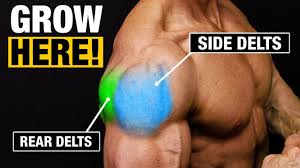
Lateral (Middle) Deltoid
The lateral deltoid (or side delt) is one of the three heads of the deltoid muscle, located on the outermost part of the shoulder. Its primary role is to abduct the arm, meaning it moves your arm away from the midline of your body in a lateral plane. The side delts give the shoulders their round, broad appearance, and are crucial for developing that 3D shoulder look.
Side Delt Characteristics
- Muscle Fiber Composition: Similar to the front delts, the side delts contain a high proportion of slow-twitch fibers (Type I), making them more endurance-oriented. However, they also have fast-twitch fibers (Type II) that contribute to explosive movements.
- Movement Function: The lateral deltoid is responsible for arm abduction, specifically from 15 to 90 degrees. It works with the rotator cuff to stabilize the shoulder joint during these movements.
Training Technique
Because the side delts are endurance-dominant, training them with high volume, moderate weights, and a slow tempo maximizes their hypertrophy potential. Incorporating high-repetition sets with short rest periods is effective, especially for sarcoplasmic hypertrophy.
Why You Should Slow Down the Exercise for Side Delts
Since the side delts are rich in slow-twitch fibers, slower movements allow these fibers to stay engaged longer, leading to greater fatigue, more muscle tears, and increased hypertrophy.
Maximizes Time Under Tension: Slow-twitch fibers benefit from longer durations under tension. Slowing down the reps, especially during the eccentric phase (lowering the weight), ensures you’re engaging these endurance-oriented fibers for a more extended period.
Improved Control and Muscle Activation: Fast, jerky movements often lead to other muscles taking over (like traps or rear delts). Slowing down ensures your side delts are the primary movers.
Increased Muscle Breakdown: By slowing down and controlling the movement, particularly during the lowering phase, you can create more muscle microtrauma, which is critical for muscle growth and repair.
How to Slow Down for Maximum Side Delt Progress
Slow Eccentric Phase: When performing lateral raises or cable raises, raise the weight in 1-2 seconds, but lower it in 3-4 seconds. This maximizes time under tension and stresses the muscle fibers more.
Controlled Concentric Phase: While lifting, ensure the weight is lifted smoothly in about 1-2 seconds. You want to feel the muscle contracting fully, not just moving the weight from point A to B.
Isometric Holds: Adding a pause at the top of the movement for 1-2 seconds during lateral raises or machine raises increases the engagement of the slow-twitch fibers, as they’ll be holding the load longer.
Higher Repetitions: Slow-twitch fibers respond better to higher repetitions. You can target them more effectively by performing 12-15 reps per set, especially in isolation exercises.
Posterior (rear) Deltoid
The rear deltoid is the muscle located on the back side of your shoulder. It is the most underdeveloped head of the deltoid in most people because it’s often overlooked in favor of the more visible front and side delts. However, well-developed rear delts contribute significantly to the 3D look of the shoulders and balance out shoulder aesthetics.
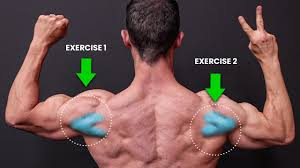
Key Characteristics of the Rear Delt
- Muscle Fiber Composition: The rear delts are composed of a significant proportion of slow-twitch fibers (Type I), like the front and side delts, but they also have a strong fast-twitch (Type II) component due to their role in explosive pulling movements. This means they respond well to both higher reps with time under tension and heavier loads.
- Movement Function: The rear delts are responsible for shoulder extension and external rotation. They help pull the arms backward (extension) and rotate the shoulder joint outward (external rotation). They’re heavily engaged in rowing, pulling, and reverse fly movements.
Best Training Techniques for Rear Delts
Because of the high percentage of slow-twitch fibers, rear delts thrive on high-volume, controlled reps. But they also benefit from heavy, compound pulling exercises where fast-twitch fibers can engage. Effective rear delt training should include both compound and isolation movements for full development.
The rear delts contain a high proportion of slow-twitch fibers, making them ideal for slow, controlled movements that increase time under tension.
Importance of shoulder strength for stability
The shoulder joint is one of the most mobile yet vulnerable joints in the human body, making deltoid strength essential for both performance and injury prevention. For bodybuilders, strong and stable shoulders are crucial because they contribute to power in most upper-body exercises, especially compound movements like bench presses, deadlifts, and rows. Here’s why shoulder strength and stability matter:
Improved performance in compound lifts
Strong deltoids, particularly the anterior and lateral heads, provide stability and power during pressing movements. Whether you’re performing a bench press or an overhead press, your deltoids help stabilize the shoulder joint and assist in lifting the weight. A strong set of delts ensures that you can handle heavier weights in these lifts.
Injury Prevention
The shoulder joint is prone to injury, especially when under heavy load or during repetitive movements. Strengthening the posterior deltoids, often a neglected area, helps maintain balanced shoulder development. This balance reduces the risk of impingement, rotator cuff tears, and other common shoulder injuries. Having well-rounded deltoids ensures that all heads of the muscle support the joint, reducing strain on tendons and ligaments.
Upper Body Symmetry
For bodybuilders, shoulder width contributes significantly to creating the “V-taper” look, making the waist appear smaller. By training all three heads of the deltoids equally, you’ll develop a more symmetrical and proportionate upper body that enhances overall aesthetics on stage or in photoshoots.

Key Exercises for Deltoid Development
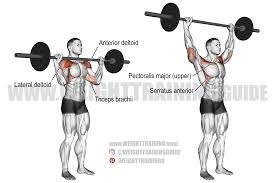
Overhead Press (Military Press)
How to Perform: Begin by standing or sitting with a barbell or dumbbells at shoulder height, palms facing forward. Press the weights directly overhead, locking out your elbows at the top while keeping a neutral spine. Lower the weight slowly to shoulder height and repeat. Engage your core to stabilize the body throughout the movement.
Why It’s Effective: The overhead press is the foundational movement for building overall shoulder strength and size. It primarily targets the anterior delts but also works the lateral delts and triceps. The pressing motion mimics many real-world movements, making it functional and effective for strength-building.
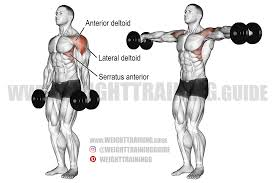
Lateral Raises
How to Perform: Hold a dumbbell in each hand with your arms hanging by your sides. Slowly raise your arms out to the sides until they are parallel with the ground, keeping a slight bend in your elbows. Lower the weights in a controlled manner. To avoid swinging, perform the movement with a light to moderate weight.
Why It’s Effective: Lateral raises isolate the lateral head of the deltoid, which is responsible for shoulder width and gives the shoulders a rounded appearance. This is a must-do exercise for those wanting to build broad shoulders. It’s essential to use proper form and avoid using momentum, as this can reduce the effectiveness of the exercise.
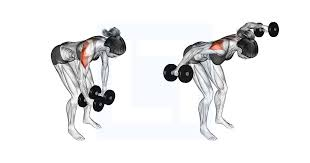
Rear Delt Flyes
How to Perform: Sit on the edge of a bench or bend at the hips until your torso is nearly parallel to the ground. Hold a dumbbell in each hand, allowing your arms to hang straight down. With a slight bend in your elbows, raise your arms out to the sides in a reverse fly motion, squeezing your rear delts at the top. Lower the weights slowly and repeat.
Why It’s Effective: Rear delt flyes target the posterior delts, an often overlooked muscle group responsible for shoulder extension and external rotation. Strengthening the rear delts is essential for maintaining shoulder balance and preventing injury. Additionally, well-developed posterior delts improve the overall appearance of the shoulders, enhancing the rear double biceps pose for bodybuilders.
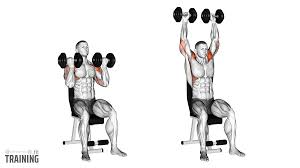
Arnold Press
How to Perform: Start with dumbbells at shoulder height, palms facing your chest. As you press the dumbbells overhead, rotate your palms outward until they face forward at the top of the lift. Lower the weights in the same rotational motion, bringing your palms back to face your chest.
Why It’s Effective: The Arnold press, made famous by Arnold Schwarzenegger, is a variation of the standard overhead press that targets the anterior and lateral deltoids while incorporating a rotational movement. This exercise works more muscle fibers throughout the shoulder range of motion, providing a more comprehensive workout for the deltoids.
By incorporating these exercises into your shoulder routine, you’ll ensure that all three heads of the deltoid are adequately targeted, leading to fuller, stronger, and more symmetrical shoulders.

Face Pulls
How to Perform: Using a cable machine with a rope attachment, stand a few feet away from the machine and grasp the rope with both hands. Pull the rope towards your face, flaring your elbows out and focusing on squeezing the rear delts at the top of the movement. Slowly return to the starting position and repeat.
Why It’s Effective: Face pulls are an excellent exercise for developing the posterior deltoids and improving shoulder health. They also strengthen the traps and upper back, contributing to better posture and reduced risk of shoulder injuries. Regularly including face pulls in your routine can help correct muscle imbalances and enhance overall shoulder aesthetics.
Balancing the Deltoids
To avoid overdevelopment of the front delts (which can lead to shoulder imbalances and injury), it’s essential to equally target all three heads of the deltoid. Rear delts are often neglected, but they play a crucial role in maintaining shoulder health and proper posture. Implementing a balanced approach ensures complete shoulder development and helps avoid potential injury.
Supporting Muscles
The deltoids do not work in isolation; they are supported by several key muscles during shoulder movements. Muscles such as the trapezius, rotator cuff muscles (supraspinatus, infraspinatus, teres minor, subscapularis), and upper back muscles all play crucial roles in stabilizing the shoulder joint and allowing for smooth, coordinated movements. These muscles help in controlling the load during lifts, ensuring that the shoulder joint remains stable and protected, especially during heavy or complex movements.
Neglecting to strengthen the supporting muscles can result in muscle imbalances, which not only hinders performance but also increases the risk of injury. Integrating exercises that target these muscles ensures that the deltoids function optimally and remain injury-resistant, promoting balanced strength throughout the upper body.
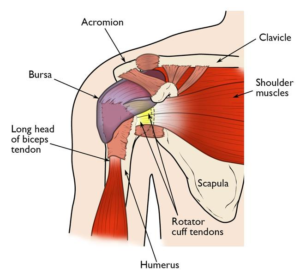
Rotator cuffs
The rotator cuff is a group of four small muscles that stabilize and move the shoulder joint. They include:
Supraspinatus: Initiates shoulder abduction (raising the arm to the side).
Infraspinatus and Teres Minor: Externally rotate the shoulder.
Subscapularis: Internally rotates the shoulder.
Role in Training: These muscles are crucial for shoulder stability, especially in pressing and overhead movements. Weak or injured rotator cuffs can severely impact shoulder function and increase injury risk. Strengthening the rotator cuff muscles through exercises like external rotations and face pulls is vital for injury prevention.
Rhomboids
The rhomboids are small muscles located between the scapula (shoulder blades) and the spine. They function to:
Retract the scapula, pulling the shoulder blades together.
Assist in maintaining posture by pulling the shoulders back.
Role in Training: Rhomboids are essential for posture and shoulder stability. They work alongside the traps and other upper back muscles during rowing movements, deadlifts, and other pulling exercises. Strengthening the rhomboids helps improve back strength and posture, reducing the risk of upper back and shoulder pain.
Together, these muscles support the deltoids and upper body in lifting movements, enhancing shoulder strength and stability.


Trapezius
The trapezius, or “traps,” is a large muscle that spans the neck, shoulders, and upper back. It has three distinct regions:
Upper traps: Elevate the shoulders and assist in tilting the head.
Middle traps: Retract the scapula, helping to pull the shoulders back.
Lower traps: Depress the scapula and support shoulder movements during overhead exercises.
Role in Training: The traps play a major role in stabilizing the scapula during exercises like deadlifts, shrugs, and overhead presses. Strengthening the trapezius ensures stability during pulling movements and prevents shoulder and neck strain.
Injury Prevention and Proper Form
Maintaining proper form is key to preventing shoulder injuries. When performing pressing movements, ensure the shoulder blades are retracted to protect the shoulder joint. Avoid excessive weight when performing isolation exercises like lateral raises to maintain control and reduce the risk of strain. Additionally, shoulder mobility exercises and dynamic warm-ups are critical to avoid injury
Shoulder workout to destroy Your delts
Warmup
Arm Circles
Perform small to large arm circles (forward and backward) for 30 seconds each direction.
Band Pull-Aparts
Grab a resistance band and hold it with both hands shoulder-width apart. Pull the band apart until your arms are fully extended. Perform 2 sets of 15 reps.
Internal and External Rotations (with resistance band or cable)
Attach a band or use a cable machine at elbow height.
For internal rotations, pull the band across your body while keeping your elbow bent at 90 degrees.
For external rotations, face the other way and rotate your arm outward. Perform 2 sets of 12-15 reps for both internal and external rotations on each arm.
Face Pulls (light)
Using a cable or resistance band, pull towards your face, focusing on squeezing your shoulder blades together. Perform 2 sets of 12-15 reps.
Main Workout
Overhead Press (Barbell or Dumbbell)
4 sets of 8-12 reps
Muscles Targeted: Primarily hits the anterior deltoid but also works the lateral deltoid and triceps.
Form: Stand with feet shoulder-width apart, core engaged. Press the weight overhead and slowly lower it back down to the starting position.
Lateral Raises (Dumbbell or Cable)
4 sets of 12-15 reps
Muscles Targeted: Lateral (middle) deltoid.
Form: Stand tall, raise dumbbells to your sides with a slight bend in your elbows. Lift the weights until your arms are parallel to the floor. Lower them back down slowly
Bent-Over Rear Delt Fly (Dumbbell or Cable)
4 sets of 12-15 reps
Muscles Targeted: Rear deltoids (posterior) and traps.
Form: Bend forward at the hips with your back flat. With arms hanging, raise dumbbells out to the sides, focusing on contracting the rear delts. Lower them back down slowly.
Barbell or Dumbbell Shrugs (Traps Focus)
4 sets of 10-12 reps
Muscles Targeted: Trapezius (upper traps).
Form: Stand with feet shoulder-width apart, holding the weight in front or at your sides. Shrug your shoulders straight up towards your ears, hold for a second, and lower back down slowly.
Face Pulls (Heavy)
3 sets of 12-15 reps
Muscles Targeted: Rear deltoids, traps, and rotator cuffs.
Form: Using a cable or resistance band, pull towards your face, keeping your elbows flared out and focusing on squeezing your shoulder blades together.
Cable or Dumbbell Front Raises
3 sets of 12-15 reps
Muscles Targeted: Anterior deltoids.
Form: Raise one dumbbell or cable handle in front of you with a straight arm until it’s at shoulder height. Lower slowly.
Cool Down
Shoulder Stretching
Perform static stretches for the anterior, lateral, and posterior deltoids.
Trapezius Stretch
Gently pull your head to the side to stretch the traps.
Child’s Pose
Helps stretch the shoulders, traps, and upper back.
Should You Do This Workout?
My goal is to provide you with the proper materials to come up with your own shoulder workout as quickly and easily as possible. The easiest way I could think of was to provide you with a comprehensive workout that will ensure every bit of your shoulders are going to grow, and proper warmups and cooldowns to reduce chance of injury. Should you copy this workout? No, you should take bits and pieces from it and come up with your own. Not everyone needs 4 sets of a single exercise to make progress.
My suggestion is to do your own research, and make your own workouts.
